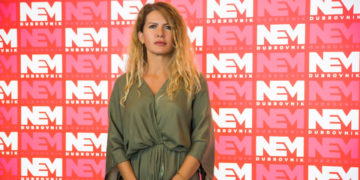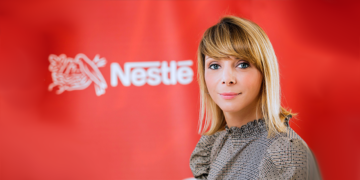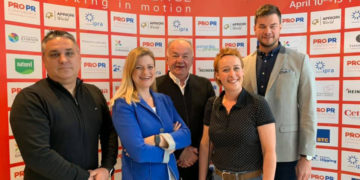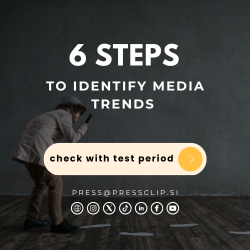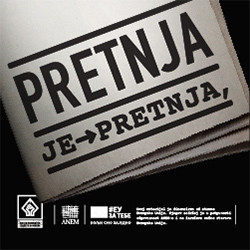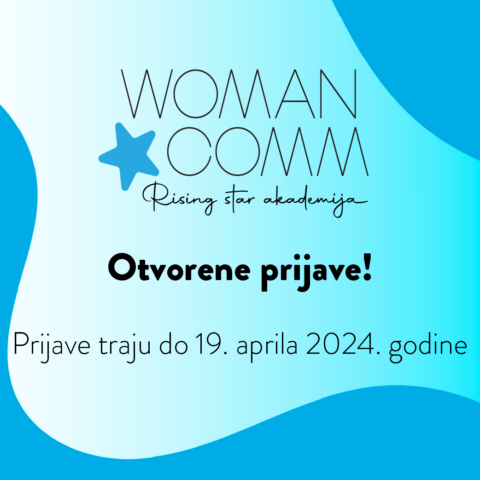Drugi jezik na kojem je dostupan ovaj članak: Bosnian
By: Ekrem Dupanović
“Digital has surpassed TV in terms of advertising budgets!” “TV is already dead, they just haven’t told you yet!” We’ve heard all this in last few years from the tech giants. It took us a while to realise that digital is just another communication channels (although very much needed) which in combination with other media channels can offer advertiser maximum efficacy to their promotional campaigns. Research carried out in the UK showed that TV advertising has increased by 4.3%, and the biggest TV advertiser was Facebook. Google was third. Radio survived the advent of TV by adapting. TV has also adapted to new advertising platforms and continues to be present in our lives successfully.
TV ratings attest to its importance in the world of advertising. Who watches TV, for how long, what stations, what shows, at what time, data that is essential for planning TV advertising. It is important that data is relevant and accurate.
We talked to Alida Žorž Miketek, the director of AGB Nielsen Croatia about TV ratings and the latest global trends
Media Marketing: Last year Nielsen Croatia celebrated its 15th anniversary. What is your position in the market today?
Alida Žorž Miketek: AGB Nielsen is a specialised agency for monitoring TV ratings founded in 2002 in Zagreb.
Within the part of the Nielsen Group that deals with researching TV ratings, AGB Nielsen is at the very top in terms of the quality of the data they produce.
In Croatia, AGB Nielsen Media Research has in place a nationally representative panel of 810 households, with over 1150 peoplemeters installed which allows us to monitor viewing habits of over 2500 individuals.
Campaigns having TV in their mix are 35% more efficient in achieving desired business effect
Media Marketing: With such a sample size and technologies you use, how capable are you to follow and introduce latest trends in TV ratings measurement?
Alida Žorž Miketek: Globally, Nielsen invests considerably into the development of the measuring of media content consumption in order to keep pace with media industry development as a whole. Nielsen is an open minded, innovative company, with strong R&D division, we create new standards of measuring, sometimes in a strategic partnerships with Google and Facebook, we created new metrics for the SVOD providers such as Netflix, Out of home viewing, second screen viewing, mobile viewing, digital ad ratings, digital content ratings, return path data for local TV channels in the USA and other specific innovations.
In 2016, in Croatia, we totally modernised our technical department, we moved to audio matching system of TV channel monitoring, our data gathering is now independent from the TV stations, IPTV and cable service providers technical performance. We have been able to analyse the ratings of time shifted viewing, since January 2017, and towards the end of 2017 we created a new service aimed at progressive advertisers, the NAI Nielsen Ad Insight.
Media Marketing: What are the dominant global trends in the media industry?
Alida Žorž Miketek: Despite indications that digital advertising budgets will be bigger than those of TV – this didn’t materialise on a global level. TV still has the largest share of the investment and research shows us that most effective advertising requires media mix with TV getting a big chunk.
In the latest Effectiveness in the digital age report, Les Binet and Peter Field used the examples of the most efficient campaigns, to show that penetration and reach of TV advertising are very important for its success.
IPA (Institute of practitioners in advertising, UK), in their report Marketing in an Era of Accountability, proved that the campaigns having TV in their mix are 35% more efficient in achieving desired business effect.
Media Marketing: While ratings for TV can be determined quite pricesely, it’s not that easy with Digital…
Alida Žorž Miketek: One of the hot topics in 2017 was the clear need for independent analysis and measuring of certain media who up to now managed to impose their internal data as relevant and accurate, although their algorithms were non transparent and lacking quality control by their peers. It is estimated that 38% of web traffic consists of false clicks.
It is interesting and informative to follow the experience of the largest global advertisers such as P&G with different media and the supporting metrics.
Chief Brand Officer Marc Pritchard has highlighted the complexity of the problem, establishing the true number of contacts achieved via online adverts, the actual quality of metrics of digital advertising, the issue of agency rebates and savings not made available to agency clients.
Some online campaigns gave rise for concern because of placement along with inappropriate content, which caused HSBC, L’Oreal and Marks and Spencer to withdraw from YouTube.
The latest example is that of Uber which started proceedings against Fetch mobile ad agency accusing them of requesting payment for false clicks on Uber online ads. It is evident that that market segment is in sore need of regulation. Ad fraud is a global problem at all levels of advertising.
Companies like Nielsen have built their reputation on transparent methodology, which can be analysed at any time by authorised auditors, and we are totally independent of any economic or political influences.
At the moment, advertisers are using different metrics and tools for each individual screen but they expect unified data on the reach and frequency of their message on many different screens (offline, online, live stream, time shifted, second screen). Nielsen’s solution, Total Audience, is unified and a comprehensive measurement on all screens. It has been launched in the American market and is a clear indicator of the direction that progressive media measurement should take.
Video is an absolutely dominant way of communication, and all social media adapt their interface to support video.
Local forces can do a lot when they unite, especially when you have the chance to collaborate with progressive and skilled people like the AlgebraLab team
Media Marketing: Judging by Nielsen data, what was the last year like for the Croatian advertising industry?
Alida Žorž Miketek: The last year was a very turbulent year for the economy as a whole because of Agrokor and all their partners. That crisis impacted the advertising industry as well. Our data shows a small decline in certain categories – retail showed a decline although it is the strongest sector in advertising, telecommunications and the food sector showed a somewhat smaller GRP sales, but pharmaceuticals, financial services and even the car industry showed considerable growth. The drinks industry fell by 14%, I believe the main reason for that decline was the fact that there were no European and World football championships in that year – every second year this sector is boosted. On average, the TV market GRPs and overall advertising value has remained stable.

Media Marketing: NAI Nielsen Ad Insights is the big news, and it’s a home produced product. What is it all about?
Alida Žorž Miketek: Nielsen Ad Insights is the latest type of report of AGB Nielsen Media Research (Croatia) based on TV ratings measuring data by using the peoplemeter TAM system.
NAI report offers, in a quick and clear way, an insight into important parameters of TV advertising campaigns, it simplifies management and control of TV campaigns.
The data is presented by using interactive Tableau software visuals, enabling a fast and simple overview and interpretation of data regardless of size.
NAI report is a simple and intuitive approach with excellent visual analytics which makes it easier to spot potential problems in brand advertising, emerging trends and results.
Media Marketing: You cooperated with the Algebra team on the NAI project. How did that go?
Alida Žorž Miketek: I met Leo Mršić, AlgebraLAB director, through tailor made training organised for my in service team. We talked about using our data for Arianna (Nielsen’s official software), we concluded that they would be extremely useful but understandable to a very limited number of users. As AlgebraLAB teams field of expertise is for the better use of data, we realised that the practical application of big data has a place in our line of business. We were particularly interested in an interactive visualisation prototype the ALAB received an award at the European Big Data Hackathon in March 2017. We used that solution as a template for our Big Data storage and Tableau tools for our interactive visualisation and creative data presentation. The NAI navigation is intuitive and simple, it allows for interaction using various filters, it adapts reports according to the clients needs and offers an overview of data sources. The final product is simple to use, frustration free although it deals with an incredible amount of data.
Media Marketing: Clients reactions to NAI were excellent. What are the benefits for them?
Alida Žorž Miketek: An in depth insight into the efficiency of their advertising as well as that of their competitors, a sort of business intelligence. It answers all their queries about the campaign results and how they compare to their competitors.
By using the NAI (Nielsen Ad Insight) the advertiser is an only a click away from a comprehensive insight of their campaign and their competitors campaign success by using all the effectiveness parameters of TV advertising.
It is estimated that 38% of internet traffic comes from fake clicks.
Media Marketing: NAI Nielsen is proof that local knowledge when united can achieve useful and interesting things.
Alida Žorž Miketek: Exactly, especially if you work with progressive and skilled people like the AlgebraLab team. We showed this product to our central office only when we fully developed the first concrete report, but it paid-off because they supported us without reserve.
Media Marketing: Is Nielsen interested in offering the product in the region and beyond?
Alida Žorž Miketek: Colleagues from the region are very interested in NAI, and we’ve already had presentations in the Adriatic region and Nielsen’s emerging markets cluster. We have formed a working group in our office that will work on the development of NAI, and there are opportunities towards a more robust, regional tool, as well as for support to our colleagues to offer NAI at the level of their own local markets.
Media Marketing: What are your future plans for development?
Alida Žorž Miketek: Nielsen buy – is part of the Nielsen monitoring retail business, there is a possibility of adding sale results to NAI which could be directly connected to the advertising campaigns, thus helping truly assess the efficiency of advertising campaigns.
We’ve signed our first contracts in the Croatian market, and the response rate from sales pitches is promising. I must admit, it is a great pleasure to create something that has had such positive feedback. What it actually means is that we have understood what our partners need and created a product that fulfills that role.





